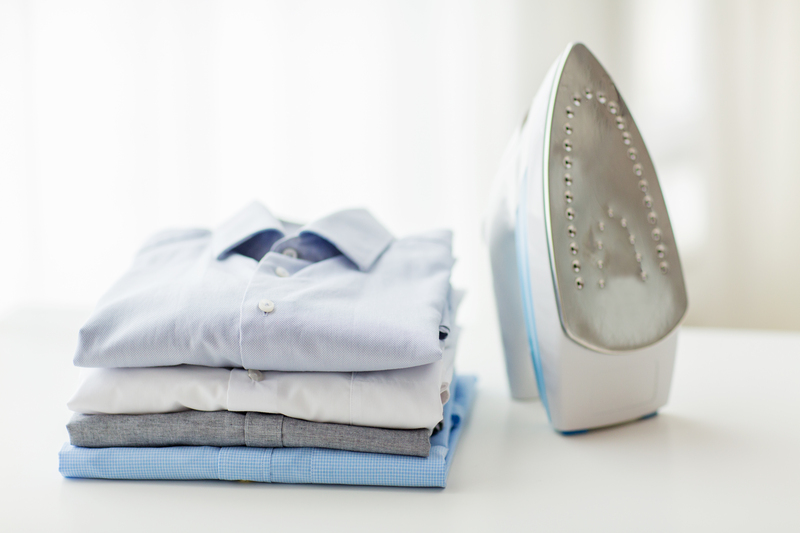Top Secrets to Maintain a Mold-Free Bathroom Environment
Posted on 18/08/2025
Top Secrets to Maintain a Mold-Free Bathroom Environment
Is your bathroom plagued with stubborn mold patches? Bathrooms--being damp and humid--are a perfect breeding ground for various types of mold. But having a mold-free bathroom environment isn't just about aesthetics; it's essential for health and home value. In this comprehensive guide, we reveal industry-proven tips and lesser-known secrets to prevent bathroom mold and keep your space fresh, healthy, and inviting.
Understanding Mold Growth in Bathrooms
To effectively maintain a mold-free bathroom, it's vital to understand why mold flourishes in this part of your home. Mold spores are present everywhere, but they thrive in specific conditions:
- Moisture: Leaks, condensation, and steam offer ideal habitats for mold.
- Poor Ventilation: Without adequate airflow, dampness persists.
- Organic Material: Dust, soap scum, and other residues provide mold with food sources.
- Warm Temperatures: Heat from showers and baths encourages faster growth.
A combination of these factors leads to rapid mold development on tiles, ceilings, grout, and other surfaces. Now, let's uncover the real secrets to ensuring your bathroom remains mold-free.

Top Secrets to Prevent Bathroom Mold
1. Master Moisture Management
The number one secret to stopping bathroom mold is controlling moisture. Here's how you can do it:
- Wipe surfaces dry: After every shower or bath, use a squeegee or microfiber cloth to remove water from walls, doors, and floors.
- Fix leaks immediately: Dripping faucets, leaking pipes, and broken gaskets can create hidden pools of water that encourage mold.
- Use a dehumidifier: Especially in poorly ventilated or windowless bathrooms, a small dehumidifier can keep the air dry.
- Monitor humidity: Bathroom humidity should stay below 50%. Invest in a hygrometer for accurate measurement.
2. Enhance Ventilation for a Mold-Free Bathroom
Ventilation is critical. Without proper air flow, moisture lingers long after you leave the room. Try these expert ventilation techniques:
- Install or upgrade exhaust fans: A high-quality, appropriately sized exhaust fan should run during and for 20 minutes after any shower. Clean the fan regularly for optimal performance.
- Open windows and doors: Whenever possible, prop open a door or window to let humid air escape faster.
- Add a bathroom window if feasible: Maximize natural ventilation by including windows in your bathroom renovation plans.
3. Choose Mold-Resistant Materials
The materials you select can directly impact how resistant your bathroom is to mold infestation. Here's what experts suggest:
- Use mold-resistant paint: Special bathroom paints contain fungicides to resist mold growth on walls and ceilings.
- Opt for mildew-resistant caulk and grout: Replace traditional materials with upgraded formulas designed to fight moisture and microbes.
- Go for glass, porcelain or ceramic tiles: These materials resist water absorption and are easier to clean.
- Avoid carpeting: Instead, use washable bath mats that can be laundered often.
4. Implement a Regular Deep Cleaning Routine
A consistent deep-clean schedule is indispensable in keeping a mold-free bathroom. Even hard-to-reach spots accumulate grime over time. Follow these steps for optimal results:
- Descale tiles and grout: Use a mixture of baking soda and vinegar or a store-bought bathroom cleaner to scrub away any visible deposits.
- Clean showerheads and faucets: Minerals and soap scum accumulate here and provide food for mold.
- Wash fabric curtains, bath mats, and towels weekly: Mold spores cling to damp fabrics. Frequent washing is a must.
- Don't forget the fan and vents: Dust and lint block airflow and can harbor spores.
5. Target Hidden Trouble Spots
Some areas are easily overlooked, yet they're prime locations for mold outbreaks. Pay special attention to:
- Behind and beneath the toilet and sink
- Inside light fixtures and exhaust ducts
- Behind wall-mounted cabinetry or mirrors
- Window sills and tracks
Secret Strategies to Keep Your Bathroom Mold-Free Long-Term
Monitor and Control Humidity Levels
*Maintaining a stable humidity level* is vital for a mold-free bathroom space. Consider:
- Running a fan during and after showers
- Using silica gel or moisture-absorbing packets in cabinets and under sinks
- Checking for condensation on windows and mirrors
- Investing in humidity-sensing exhaust fans
Check and Upgrade Lighting
Mold loves damp and dark environments. Boost bathroom lighting to discourage growth. Use bright, energy-efficient LED lights and keep fixtures clean and free of dust.
Encourage Air Circulation
Leaving the bathroom door slightly open between uses allows air to circulate, drying moisture quicker and making mold prevention in bathrooms much easier.
Seal Cracks and Gaps
Small cracks in tile, grout, and caulk allow water and steam to seep beneath surfaces, promoting mold colonization from within. Use high-quality caulk to routinely seal any compromised gaps.
Smart Cleaning Products for a Mold-Free Bathroom
Not all cleaning products are created equal when it comes to mold prevention in bathrooms. Here are some recommended options:
- Natural mold removers like vinegar and baking soda: Safe, eco-friendly, and effective on many surfaces.
- Commercial mold and mildew sprays: Choose EPA-approved formulas for lingering issues.
- Hydrogen peroxide: An excellent alternative to bleach, especially for grout or corners.
- Essential oils: Tea tree, eucalyptus, or lavender oils can help prevent mold while leaving a natural scent.
Design Solutions for a Mold-Free Bathroom Environment
Upgrade Fixtures
Replace old shower doors and curtains with modern, water-repellent options.
Opt for floating vanities to minimize water exposure on cabinetry and make cleaning a breeze.
Sloped Floors and Drains
Ensure that tiles are slightly sloped toward the drain, preventing standing water--a leading cause of moldy bathroom floors.
Minimalist Design Choices
The fewer nooks and crannies, the lower the risk. Shelving, built-ins, and open storage make it easier to spot and clean potential problem areas.
Smart Storage and Organization
Avoid overcrowding the bathroom. Excess clutter traps moisture and dust, creating perfect microenvironments for mold.
When to Call in a Professional
Even the best DIYers occasionally need help. If you notice persistent issues--such as a musty odor, visible mold that keeps reappearing, or health symptoms worsening--it may be time to call in a bathroom mold remediation specialist. They have the expertise and equipment to:
- Identify the root cause (leaks, hidden water, poor construction, etc.)
- Safely remove hazardous mold
- Address underlying issues to prevent return
The Importance of Mold Prevention for Health
Mold isn't just unpleasant or an eyesore--it's a genuine health hazard. Long-term exposure to mold spores in a bathroom environment can trigger a variety of symptoms, especially for sensitive individuals:
- Allergic reactions (sneezing, rashes, red eyes)
- Worsening asthma or respiratory issues
- Headaches, fatigue, and general malaise
Children, the elderly, and immunocompromised individuals are especially susceptible. Maintaining a mold-free bathroom protects not just your home but your family's well-being.
Frequently Asked Questions about Maintaining a Mold-Free Bathroom Environment
How do I keep my bathroom mold-free permanently?
- Consistently clean weekly, focusing on moisture-prone areas.
- Ensure proper ventilation (use fans, open windows).
- Repair leaks immediately.
- Use mold-resistant finishes and materials.
- Monitor humidity regularly.
How often should I clean my bathroom to avoid mold?
At least once a week. Focus on tiles, grout, under sinks, and moisture-absorbing surfaces.
Can cleaning mold myself be dangerous?
Small patches are usually safe to manage with gloves and non-toxic cleaners. Large infestations, black mold, or recurrent problems should be handled by professionals.

Summary: Your Mold-Free Bathroom Success Checklist
- Manage moisture--wipe up water, fix leaks.
- Maximize ventilation via fans, windows, and airflow.
- Choose mold-resistant products for paint, grout, and caulk.
- Deep clean weekly--focus on all nooks and crannies.
- Reduce clutter and maintain smart storage.
- Seal any cracks or gaps promptly.
- Monitor and control humidity levels.
- Consider design upgrades for prevention.
Take Control, Keep Your Bathroom Mold-Free
Maintaining a mold-free bathroom environment doesn't have to feel overwhelming. By combining proactive cleaning, smart design choices, and a watchful eye for moisture, you can keep your bathroom clean, healthy, and welcoming. Embrace these secrets, and say goodbye to bathroom mold for good!
Take charge of your space today--because a sparkling, mold-free bathroom environment is not just a luxury, it's a necessity for a healthy home.




